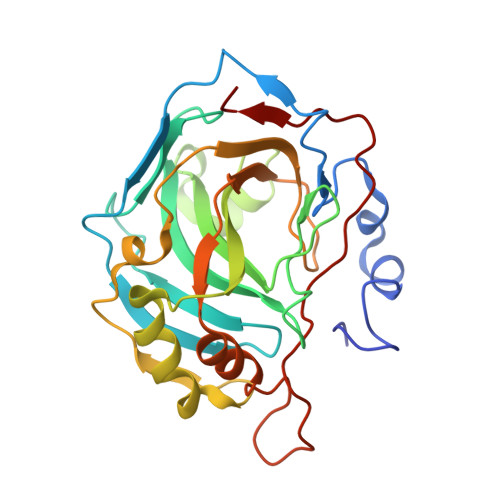A Predictive Approach for the Optical Control of Carbonic Anhydrase II Activity.
DuBay, K.H., Iwan, K., Osorio-Planes, L., Geissler, P.L., Groll, M., Trauner, D., Broichhagen, J.(2018) ACS Chem Biol 13: 793-800
- PubMed: 29357237
- DOI: https://doi.org/10.1021/acschembio.7b00862
- Primary Citation of Related Structures:
5T71, 5T72, 5T74, 5T75 - PubMed Abstract:
Optogenetics and photopharmacology are powerful approaches to investigating biochemical systems. While the former is based on genetically encoded photoreceptors that utilize abundant chromophores, the latter relies on synthetic photoswitches that are either freely diffusible or covalently attached to specific bioconjugation sites, which are often native or engineered cysteines. The identification of suitable cysteine sites and appropriate linkers for attachment is generally a lengthy and cumbersome process. Herein, we describe an in silico screening approach that is designed to propose a small number of optimal combinations. By applying this computational approach to human carbonic anhydrase and a set of three photochromic tethered ligands, the number of potential site-ligand combinations was narrowed from over 750 down to 6, which we then evaluated experimentally. Two of these six combinations resulted in light-responsive human Carbonic Anhydrases (LihCAs), which were characterized with enzymatic activity assays, mass spectrometry, and X-ray crystallography. Our study also provides insights into the reactivity of cysteines toward maleimides and the hydrolytic stability of the adducts obtained.
Organizational Affiliation:
Department of Chemistry , University of California at Berkeley , Berkeley , California 94720 , United States.


















